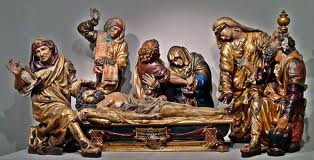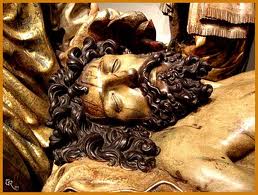Baroque: Juan de Juni
Juan de Juni was a half French, half Spanish sculptor who is celebrated for his contribution to the Spanish sculpture of the 16th Century. He is also one of the most famous representatives of the Castilian Spanish school of sculpture.
Juan de Juni (1506-1577)
Juan de Juni was born in Joigny, in France but moved to Spain in the 1530s. Before this however, Juan de Juni studied his art in France and Italy. It was in 1533 that Juan de Juni then travelled to Spain, where he settled in León and began to work.

In León, Juan de Juni worked for the Convent of San Marcos, completing decorative works such as the facade for which he produced relieves of religious scenes including the Resurrection among others. It is also known that Juan produced some polychromed wood figures for the Church of San Francisco in the town of Medina de Rioseco in 1537.
After this, Juan de Juni moved to live in Valladolid. This city would become the place where he completed the majority of his sculptures. In 1540, Juan de Juni received a commission from the Bishop of Mondoñedo to create a representation of the Burial of Christ on a tomb in the San Francisco Convent in Valladolid. However after a trip to Salamanca to complete another sculpture for a tomb, Juan de Juni fell ill and had to delay his work on the Bishop's commission until he managed to return to Valladolid.
This work, 'Santo Entierro de Cristo' (Sacred Burial of Christ), was to become one of the most famous of Juan de Juni's sculptures. Juan de Juni produced the sculpture between 1541 and 1544. This piece demonstrates the complexity and quality that Juan de Juni could produce. It used to lie in the Convent of San Francisco in Valladolid but this building has now disappeared, however you can now see it in the National Museum of Sculpture.

In 1545, Juan de Juni was commissioned by the 'Iglesia de Santa María de La Antigua' (Church of Saint Mary the Ancient) in Valladolid to complete the main altarpiece. Originally, the work had been given to Alonso Berruguete and his disciple, however, ultimately the work ended up in Juan de Juni's hands.
Juan de Juni's sculpture gained fame across Spain thanks to this work and he was never short of clients or commissions. For example, in the following years, Juan de Juni received a commission from the Order of Santiago to create the choir stalls, one from Pedro Álvarez de Acosta for the main altarpiece at the Cathedral of Burgo de Osma, and finally by the Bisop of Zamora to produce the sculpture for his tomb in Ciudad Rodrigo, near Salamanca.
It is clear that the style of Juan de Juni in Spain was derived from the influence of his early life in France and the sculptures he encountered in Italy. The grandeur of his large works have some elements of the works of Michelangelo and Claus Sluter. Juan de Juni's sculptures are accurately modelled, realistic, and passionate, even where the figures' expressions are sweet. In fact, the way in which some of his sculptures are wearing their clothes and their emotionally intense expressions could mean that you could consider Juan de Juni as the father of Spanish Baroque Sculpture, alongside Alonso Berruguete.
One of the most common recurring themes of Juan de Juni's work was Christ on the cross, of which he produced an extensive series of sculptures. Some of these sculptures would show Christ after he had died, but some would depict Him at the moment of death.
Juan de Juni began to fall ill in 1577 and so delegated his work to his son, Isaac. A few months later, in April of 1577, Juan de Juni died in the city of Valladolid; the city which he helped make famous for its sculpture.
